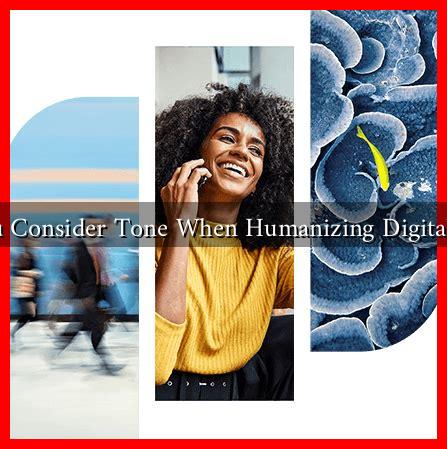-
Table of Contents
Should You Consider Tone When Humanizing Digital Messages?
In an increasingly digital world, the way we communicate has evolved dramatically. As businesses and individuals rely more on digital messaging, the importance of tone in these communications cannot be overstated. Tone is not just about the words we choose; it encompasses the emotional quality and intent behind those words. This article explores why tone is crucial when humanizing digital messages and how it can significantly impact engagement and relationships.
The Importance of Tone in Digital Communication
When we communicate face-to-face, we rely on non-verbal cues such as body language, facial expressions, and vocal intonations to convey our message. In digital communication, these cues are absent, making tone even more critical. Here are some reasons why tone matters:
- Establishes Connection: A friendly and approachable tone can create a sense of connection between the sender and the recipient, making the interaction feel more personal.
- Influences Perception: The tone can shape how the message is perceived. A formal tone may convey professionalism, while a casual tone can suggest friendliness and openness.
- Affects Engagement: Messages with a positive tone are more likely to engage the audience, leading to higher response rates and better overall communication.
Examples of Tone in Digital Messaging
To illustrate the impact of tone, consider the following examples:
- Customer Service Emails: A customer service representative responding to a complaint with a warm and empathetic tone can turn a negative experience into a positive one. For instance, instead of saying, “We cannot process your request,” a more humanized response would be, “I understand how frustrating this must be for you, and I’m here to help resolve it.”
- Social Media Posts: Brands that use a conversational tone in their social media posts often see higher engagement rates. For example, Wendy’s Twitter account is known for its witty and playful tone, which resonates well with its audience and encourages interaction.
Case Studies: The Power of Tone
Several companies have successfully leveraged tone to humanize their digital messages:
- Mailchimp: The email marketing platform uses a friendly and approachable tone in its communications, making complex topics more digestible for users. Their blog posts often include humor and relatable anecdotes, which help to build a community around their brand.
- Slack: The workplace communication tool emphasizes a casual and friendly tone in its messaging. Their onboarding emails are designed to be welcoming and supportive, which helps new users feel comfortable and engaged from the start.
Statistics on Tone and Engagement
Research supports the idea that tone significantly affects engagement. According to a study by HubSpot, 93% of communication is non-verbal, which includes tone. Additionally, a survey by Salesforce found that 70% of consumers say that a friendly tone in customer service interactions makes them more likely to return to a brand.
How to Implement the Right Tone in Your Digital Messages
To effectively humanize your digital messages, consider the following tips:
- Know Your Audience: Tailor your tone to fit the preferences and expectations of your audience. A younger audience may appreciate a more casual tone, while a professional audience may prefer a formal approach.
- Be Authentic: Authenticity resonates with people. Use a tone that reflects your brand’s values and personality.
- Use Personalization: Addressing recipients by their names and referencing past interactions can make your messages feel more personal and engaging.
Conclusion
In conclusion, considering tone when humanizing digital messages is essential for effective communication. A well-chosen tone can establish connections, influence perceptions, and enhance engagement. By understanding your audience and implementing an authentic and appropriate tone, you can create digital messages that resonate and foster meaningful relationships. As we continue to navigate the digital landscape, let us not forget the power of tone in making our communications more human.

